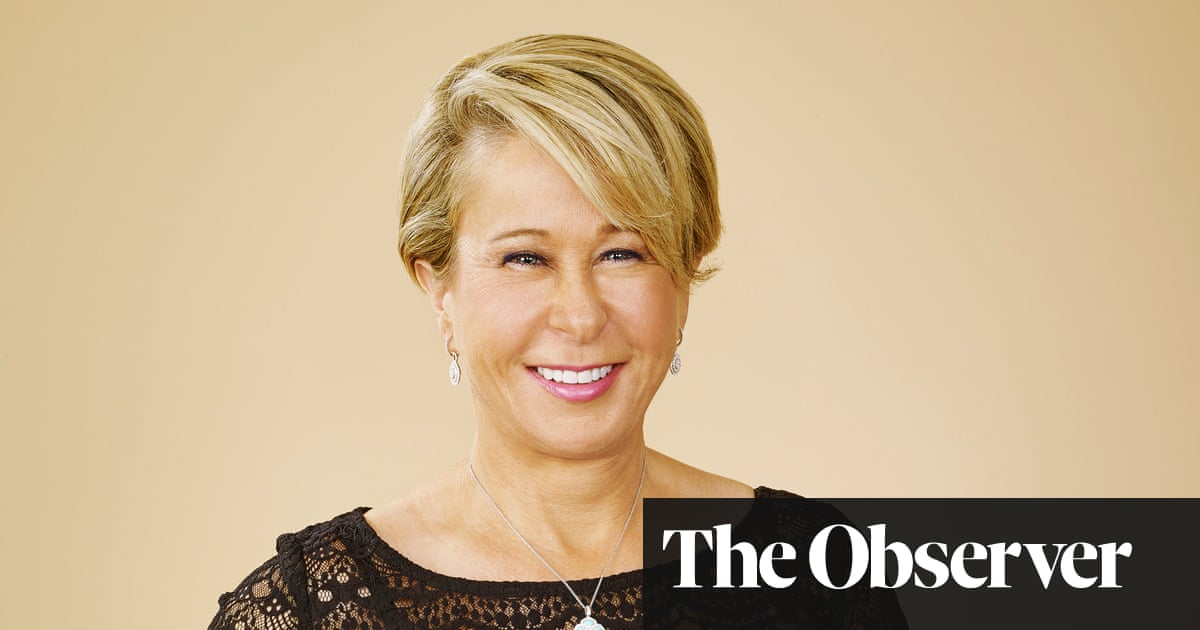
On 29 October 2004, a young woman walked into Wembley Point, a distinctive triangular office block in the outer reaches of north-west London. The 21-storey tower slices into the sky, a lattice of windows and white and bronze panelling. More than double the height of any other building in the vicinity, it is surrounded by a large car park and situated on an intersection: the roaring traffic of the North Circular on one side, the off-licences and chicken shops of Harrow Road on the other. Below, next to the tower, the dull water of the River Brent flows past, edged by graffitied walls and crossed by two concrete footbridges. There is not much nearby: a couple of office buildings, a carpet shop, Stonebridge Park underground station. It is not the kind of place you visit unless you have a reason.
The woman was black, petite – somewhere between 5ft 1in and 5ft 3in, police would later say – and dressed smartly in a thin black polo neck under a claret crew neck and a maroon bomber jacket. The autumn weather was starting to bite and she wore tights under her black trousers, with a pair of black Skechers shoes. On her wrist was a simple silver watch, which offset her two silver rings, one of which had a shell shape. She had with her a plastic carrier bag and a large oil painting.
It was before 9am and workers were still filtering into Wembley Point. The woman got into the lift. Two fellow passengers recall she was intensely distressed. One told investigators he said something like: “Cheer up, love, it might never happen.” When they got out, she continued to the 21st floor, where there was a cafe. It was a workplace canteen, not the kind of place you’d know about if you weren’t familiar with the building.
In the cafe, the woman bought a coffee and sat at a table close to a window. She smoked a cigarette from an almost empty 10-pack of Marlboros and leafed through a copy of the Guardian she was thought to have brought with her. Then she stood up, climbed on to the table, opened the window and jumped out. “Things happened in a split second,” one person in the cafe at the time told investigators. “One moment she was sat very still in the far corner of the restaurant. I bought my coffee and as I looked sideways, she was no longer there, with the window ajar. It’s taken me some time to get over my sadness at how I felt; mainly, what could have happened to this person to feel there was nothing else to live for?”
Lisa Hedderman was head of the contact centre for Loot, the free classified ads paper, which had offices on the sixth and eighth floors. She was in a meeting when her PA came running in: “She literally threw herself on me, sobbing.” When she calmed down enough to speak, the PA explained she had been in the cafe when the woman jumped; she had not recognised her.
Soon after 9am, police retrieved the woman’s body from the river below. She did not have a single identifying document or object on her; no wallet, no bank cards or driving licence, no house keys, no phone.
For people who worked in the building, it was a huge shock, followed by eerie silence. “We were never gathered together and told anything,” says Peter Munro, who worked as an editor at Loot. “I remember people saying no one recognised her, that she didn’t work in the building.” Workers speculated she may have gone there with the aim of jumping. Certainly, if she had worked at one of the many businesses in the building, her manager or colleagues could have identified her. But if she picked the building at random, why take an oil painting with her, and how did she know the cafe was there? “Security was quite lax, but the cafe wasn’t the kind of place where you saw members of the public,” Hedderman says. “And how would you know there were no safety locks on the windows? Even in 2004, I think that was quite unusual on such a high floor.”
In the days, weeks, months and years that followed, the questions only grew. No one came forward to identify the woman’s body or report her missing. The police investigation stalled, if it ever really began; the death was clearly a suicide with no evidence of third-party involvement, so probably not a high priority. “I didn’t hear any more about it,” Hedderman says. “We didn’t get interviewed. We didn’t see police in the building.”
The only clues to the woman’s identity are the things she left on the table. A seven-day bus pass issued three days earlier, on Tuesday 26 October, bought at 7.07am on Seven Sisters Road in north-east London, more than 10 miles away. £5.20 in cash. A copy of the Guardian. An empty pack of cigarettes. A black carrier bag bearing the lettering “CPNY”. The oil painting. Measuring 60cm x 30cm, it is a mostly abstract work featuring different figures and monochrome patterns that look as if they could be derived from tribal art. On the right are bodies dancing, or falling. At the centre is a blank white space where a face should be. It’s an image that is hauntingly appropriate: more than 18 years later, the woman who died at Wembley Point has never been identified.
How is it possible to die and apparently not be missed? In recent years, a group of intrepid investigators have taken up the case of the Wembley Point woman. These volunteers have trawled council records, interviewed witnesses and scoured the internet in search of the woman’s identity. What drives people to spend so much time investigating a case like this, and after so much time has elapsed, can they ever succeed?
The Wembley Point woman is one of about 1,000 people in the UK who are still unidentified after their death. Many existed at the margins of society – perhaps isolated through addiction, or living on the streets. But the Wembley Point woman did not appear to fit this profile; she was well-groomed and smartly dressed, which suggests she had somewhere to live and a source of income. The mortuary staff remember her vividly – she was so well turned-out, they assumed someone would come forward to claim her quickly. “This isn’t a case of somebody disconnected from a network,” says Emma Tilley, a 29-year-old former civil servant who is completing a PhD on unidentified bodies at Staffordshire University. She came across the Wembley Point case during her research and couldn’t get it out of her head. “She was a young woman who clearly needed help and, for whatever reason, she didn’t get that help,” Tilley says. “Now she’s been lying in a cemetery without any visitors for two decades. It’s just heartbreaking.”
Why hasn’t anyone come forward? Police estimated the woman was aged between 20 and 40. Perhaps she was living a transient lifestyle, doing casual work and occupying short-term lets. She could have been living or working far from home, so loved ones in another country didn’t know where to look when she dropped out of contact. (The people who recall speaking to her in the lift cannot remember if she spoke with a British accent.) She could have been socially isolated, or have the kind of shallow relationships where people didn’t think too much of it when she disappeared, assuming they’d lost touch with her.” In her research, Tilley also found human error can make it hard for police to match bodies with missing persons’ reports; for instance, if someone tells loved ones they’re 6ft when really they’re 5ft 10in, then the report wouldn’t match the body.
In the US, the rise of genetic genealogy and the huge popularity of commercial DNA testing sites such as 23andMe have helped to solve a wave of cold cases. But the British police do not currently use these commercial entities, and while they do check DNA against their own databases, in 2004 DNA science was still in its infancy – and it is not clear if samples were even taken from the Wembley Point woman. The case soon went cold. No one was actively trying to find her – until a few years ago.
Locate International was founded in 2019 by two former police officers, with the aim of mobilising volunteers to examine cold cases of missing people and unidentified bodies with pavement-pounding, internet-scouring investigation. “It’s the kind of work the police simply don’t have the capacity to do,” says Dave Grimstead, co-founder and chief executive of Locate. Grimstead is a former detective inspector who managed complex investigations on kidnap and extortion, and worked at the National Crime Agency on international and serious organised crime. “It’s always the cases that remain unsolved that stay with you,” he says. “You see the impact on the family when no answers are found and gradually the resources dwindle. It just becomes a folder in a filing cabinet. You have to start again.”
Locate has grown rapidly and now has 325 volunteers; it partners with a number of university departments which share expertise in criminology and new research techniques. Most cases come from the UK’s missing persons database. Volunteers have solved several cases of unidentified bodies, including a young man who died in London in the 90s – an investigation that spanned two continents – and another in the east of England. (The families do not want their names to be made public.) Tilley started to volunteer with Locate and, still haunted by the Wembley Point woman, mentioned the case. Locate allocated volunteers and requested the coroner’s report from the Metropolitan police, which would include a detailed postmortem, as well as records of every interview the police did. The decision about releasing this is down to the force: “Some jump at the chance to have resources allocated to a case they are not actively looking into; others are more risk-averse,” Tilley explains. In this case, police did not share the report, so all Locate investigators have to go on is the information already in the public domain: the building, the woman’s clothing and the things she left behind.
Angela Watts, 67, is a former Salvation Army minister based in Wiltshire who leads the team of volunteers looking into the Wembley Point woman. Now retired, she spends her time volunteering – not just with Locate, but as a rescue driver for the Salvation Army’s modern slavery programme, transporting people across the country to safe houses, often at very short notice. Watts’s interest in people left behind, forgotten and marginalised began with her work as a minister. She recalls attending an almost empty funeral of a 75-year-old woman: “That’s always lived with me, how people can slip through the cracks.” Her team is scattered across the UK – Yorkshire, Cornwall, Lancashire – and meet regularly on Zoom to discuss leads on this and the two other cases they are looking at. Amateur sleuths are a modern phenomenon; Facebook and Reddit users scouring the internet for leads on missing people or murders, in some instances – as in the recent case of Nicola Bulley – harassing family and obstructing actual investigations. But Locate’s work is a far cry from this; volunteers undergo 30 hours’ training on missing people, investigation and case management. They can then opt to do further training in areas such as open-source intelligence and DNA use in human identification.
Watts says of the Wembley Point woman: “It’s impossible to go through life without touching someone. Somewhere there are parents, siblings, friends. This dreadful thing has happened. Let’s honour her by restoring her name.” The team started by assessing the information they had. The time the bus pass was bought suggests she lived in Seven Sisters or was starting a morning commute from there – perhaps staying with a friend or partner. The fact that she had a seven-day pass suggests she needed to use public transport most days, which in turn suggests she had a job she travelled to. It is not clear whether she started her journey to Wembley that day from Seven Sisters or somewhere else. But clearly she had some connection to both places. Wembley Point is an office block in an unremarkable suburb, far from central London; it is not a tourist destination or a place someone might casually pass through. If the Wembley Point woman did not live locally, then she must have had some reason to be there. Perhaps the building itself could hold the answers.
Maggie Jenkin, 62, is on Watts’s team and has spent several years investigating the case. A retired radiologist based in Cornwall, she signed up as a Locate volunteer in 2020 after reading an article in Saga. Locate’s volunteers are aged between 18 and 75, ranging from students to retirees. They meet on Zoom every week. Jenkin still remembers first seeing the postmortem picture of the Wembley Point woman, on the UK missing persons database online. “There was just something about her,” Jenkin says. “It’s haunting. She had a life. But nobody seems to have missed her.”
Although Jenkin had never done any investigative work before, she turned out to have a flair for it. From Brent council, she obtained a list of businesses renting space at Wembley Point in 2004, then scoured Companies House for contact details, finding employee reunion groups on Facebook, emailing everyone she could think of. It was Jenkin who tracked down the people who travelled in the lift with the woman. Wembley Point had been home to some businesses with a high staff turnover – the sales floor for Loot, a call centre company called TNS. Investigators wondered whether the woman may have been a short-term or casual employee. But Jenkin found a number of people who worked at these call centres and no one remembered her. Another lead was the American University in London, which had a classroom on Seven Sisters Road and an office at Wembley Point. A 2003 Guardian article on unaccredited universities mentioned the place. Was this the missing link? Attempts to contact the proprietors have been ignored. “As volunteers, there’s only so much we can do,” Jenkin says. “We have no powers.”
Another organisation operating from Wembley Point was a charity called Loud and Clear Mental Health Advocacy. Could the Wembley Point woman have been there to access support? Again, attempts to speak with former staff have been unsuccessful. These threads hang in the air: unanswered questions, unconfirmed links. Having spoken to more than 20 people who worked in the building at the time, Jenkin is still thinking of her next move. “At one point I was feeling, we’re so close to her. And now I’ve hit this brick wall.”
The UK missing persons database has photographs of some of the Wembley Point woman’s possessions, and a list of the others. “We’ve looked at them again and again,” Watts says. The painting is particularly intriguing. Did she paint it herself, did she buy it, or was it a gift? Locate reached out to art schools in Seven Sisters and to supply shops, to see if anyone could recall selling the paints or the canvas. But after more than a decade and a half, and with nothing more precise to focus on than the vicinity of a tube station, this is like searching for a needle in a haystack. Jenkin discovered the company that owned Wembley Point sometimes put on art exhibitions, and investigators wondered if the woman might have brought her artwork there to pitch it – but Jenkin tracked down the exhibitions’ curator and the artwork didn’t mean anything to them.
Working only off the publicly available information has its frustrations, too. “We’ve got this painting. It’s not a common thing for people to walk around with,” Jenkin says. “But was there a signature on the back? A name? Anything like that would give us a bit more information.” Research into the carrier bag suggests it was from a small chain of clothing stores, now defunct, which had branches in Ealing, Enfield and Tottenham. Another line of inquiry is to track down any employees who may remember the woman buying something. They hope someone may come forward after seeing media reports or their other appeals, which include flyering in the areas where the shops once operated.
Tilley says one of the first things the team did was to go to Seven Sisters Road and the area around Stonebridge Park underground station to hand out flyers and ask local businesses to put up posters. “We don’t know if that was ever done at the time; there’s a lack of police resources, especially, sadly, for an investigation relating to a black woman,” she says. (The Met declined to comment, saying: “2004 is a long time ago and the officers who would have looked at this case would either have moved on or long since retired.”)
Locate issued a new artist’s impression of what the Wembley Point woman may have looked like. The image, created by forensic artist Hew Morrison, was based on the postmortem photograph. The aim is to jog someone’s memory, to get a crucial tip that may lead them to her identity, but after so many years, this is a challenge. Tips can be hard to verify; one person says they recognise the woman from working at catering events around London, but don’t recall a name or an agency that may have employed her. Someone else says their brother spoke to the woman and she was distressed about a relationship breakdown, but her brother does not want to speak, so it remains third-hand information. The team have their theories and questions, but that is all they are. “This person is drifting through London, living a life, but not making meaningful relationships,” Jenkin says. “Was that because she didn’t have legal status? Could she have been protecting herself?” Watts wonders if cultural stigma around suicide may have prevented loved ones from coming forward.
Even after three years of tireless investigation, there are more questions than answers. Why was the woman at Wembley Point? Why did she have the oil painting? Is there a friend or relative out there who has been wondering what happened to her? To the people investigating, this woman has become a real person rather than just a case – the details just out of reach, but somehow within touching distance. Watts keeps returning to the possessions. “She didn’t just have a nine-to-five. She had a broader mind, a creative element – even if she didn’t create that artwork, she appreciated it.” Tilley worked on the case for two years, before stepping back to focus on her PhD. But she still thinks about the Wembley Point woman: “I would sometimes dream about her and the moments just before she jumped. Without even realising it, you get so attached, and you talk about her as if she is someone you know.”
When someone dies without being identified, the council is obliged to bury them under a process known as a public health funeral; cremation is cheaper, but burial is considered a safer option, as it carries less risk of violating someone’s religious beliefs and means a body can be exhumed later. Watts says it is not always easy to find out where an unidentified person is buried. Sometimes records are poorly maintained, and sometimes unscrupulous subcontractors cremate a body to cut costs. When Brent council was able to provide details of the Wembley Point woman’s burial site, the team breathed a collective sigh of relief.
Carpenders Park Lawn Cemetery is in Watford, just outside London. I walk there from the train station on a sunny spring day, along a wooded path that opens out on to a neatly manicured lawn punctuated by colourful flowers adorning mostly flat gravestones. As I look for the spot where the Wembley Point woman is buried, I pass elaborate displays of floral lettering spelling out relationships in bright colours: “Grandma”, “Brother”, “Mum”. Gravestones bear not just names and dates, but messages of love. “To the world you may have been just somebody, but to us you were the world,” reads one. It is hard not to think of how sad it is for someone to die, apparently without leaving this kind of sentiment behind. As Watts says: “When did it start? When did she start withdrawing, stop making an impact?”
The Wembley Point woman’s final resting place is marked in the cemetery records as a communal grave. Tilley says this is a common practice, to cut down on costs and space. A stone with a plot number marks the spot. The lawn grows over some of the gravestones, making it hard to distinguish where one plot ends and another begins. The rustling of the cellophane wrapping on cut flowers mingles with birdsong and the sound of wind charms strung up in the trees.
The identity of the Wembley Point woman remains a mystery, but investigators have not given up. They are convinced they will be able to restore her identity. When Locate got in touch with Munro, the Loot editor, he was relieved. Over the years, he has occasionally thought of the woman who jumped, but until Locate took up the case, there was no information online, nothing about who she was or what happened to her. “I just thought, someone still cares about this person. She hasn’t been forgotten. I definitely remember her and I’m glad other people are trying to remember her, too.”
Anyone with information can email Locate International at info@locate.international or call 0300 102 1011.












